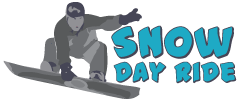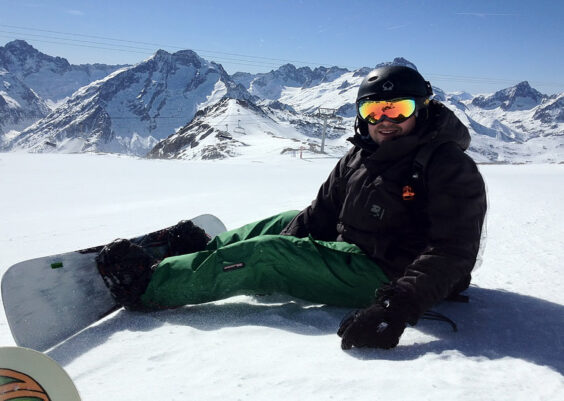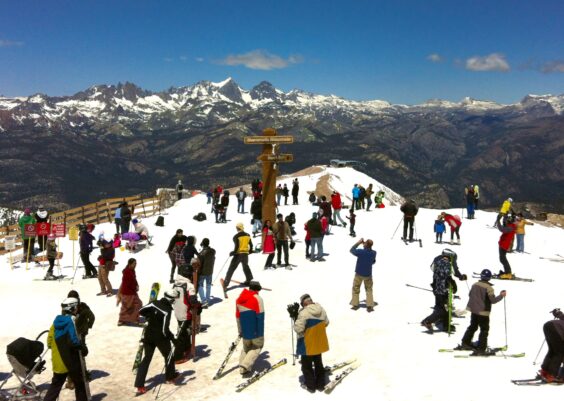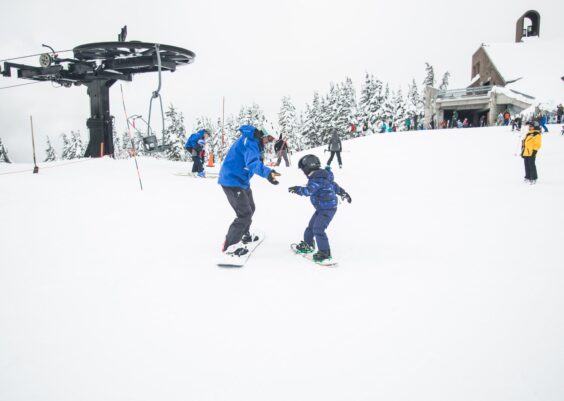Last updated on September 5th, 2025 at 02:04 pm
Key Takeaways
- Skiing is easier for beginners.
- Snowboarding progresses faster after basics.
- Snowboard boots are more comfortable.
- Skiing risks knee injuries more.
- Snowboarding excels in powder snow.
Knowing what is the difference between skiing and snowboarding helps you choose which sport to try first and why many riders end up learning both.
Quick Comparison: Skiing vs. Snowboarding
| Aspect | Skiing | Snowboarding |
|---|---|---|
| Gear | Two skis, stiff boots, poles | One board, softer boots, no poles |
| Beginner Learning | Easier to start, simple stopping methods | Steeper start, edge control needed |
| Falls & Injuries | More knee injuries (ACL, twists) | More wrist and tailbone injuries |
| Progression | Slower, highly technical mastery | Faster after basics, fewer core moves |
| Terrain Strengths | Moguls and steep ungroomed trails | Powder and terrain parks |
| Comfort | Boots stiff and awkward to walk in | Boots comfortable and easy to move in |
| Costs | Similar to snowboarding | Similar to skiing |
The difference between skiing and snowboarding starts with how you stand and move on snow. Skiers use two skis with poles, while snowboarders ride a single board with both feet strapped in.
This simple contrast shapes the gear, the way beginners learn, and even the types of injuries most common in each sport.
Skiing often feels natural to first-timers, while snowboarding demands balance and edge control that take time to master. Beyond learning, each sport shines in different terrains. Moguls favor skiers, while powder and parks favor snowboarders.
What Is the Difference Between Skiing and Snowboarding?
Skiing and snowboarding share the same slopes, but they feel very different once you start. Skiers move with two skis and poles, while snowboarders ride sideways on a single board.
This core difference shapes how each sport is learned, the type of gear used, and the skills needed for progress. From comfort and injuries to terrain strengths, these contrasts matter for beginners deciding where to start and for experienced riders aiming to master both.
Learning Curve and Beginner Experience
Learning to ski or snowboard feels very different from day one. Skiing offers a natural stance with two skis pointing forward. Beginners can slow down or stop using the simple “pizza” wedge and then progress to parallel “french fry” skis.
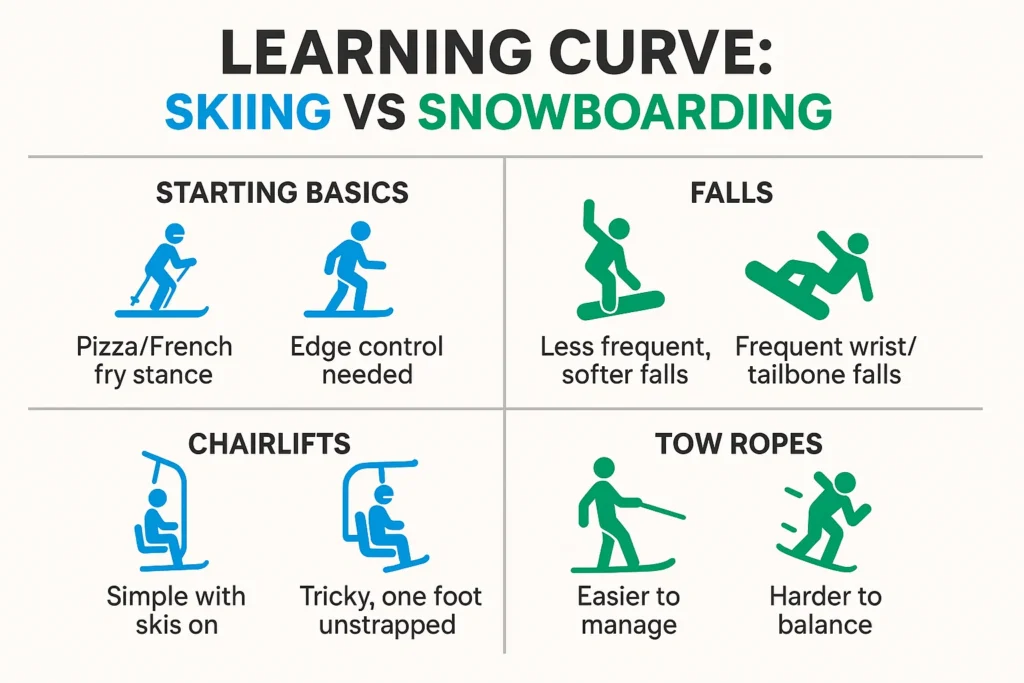
Snowboarding demands more patience. Riders must control edges to avoid catching the front or back, which often leads to sudden falls. Getting on and off chairlifts is also easier on skis, while snowboarders need to manage with one foot unstrapped.
Injuries and Physical Demands
Each sport stresses the body in different ways. Skiing places more pressure on the knees, as the legs move separately and can twist during falls. This makes ligament injuries, like ACL tears, more common.
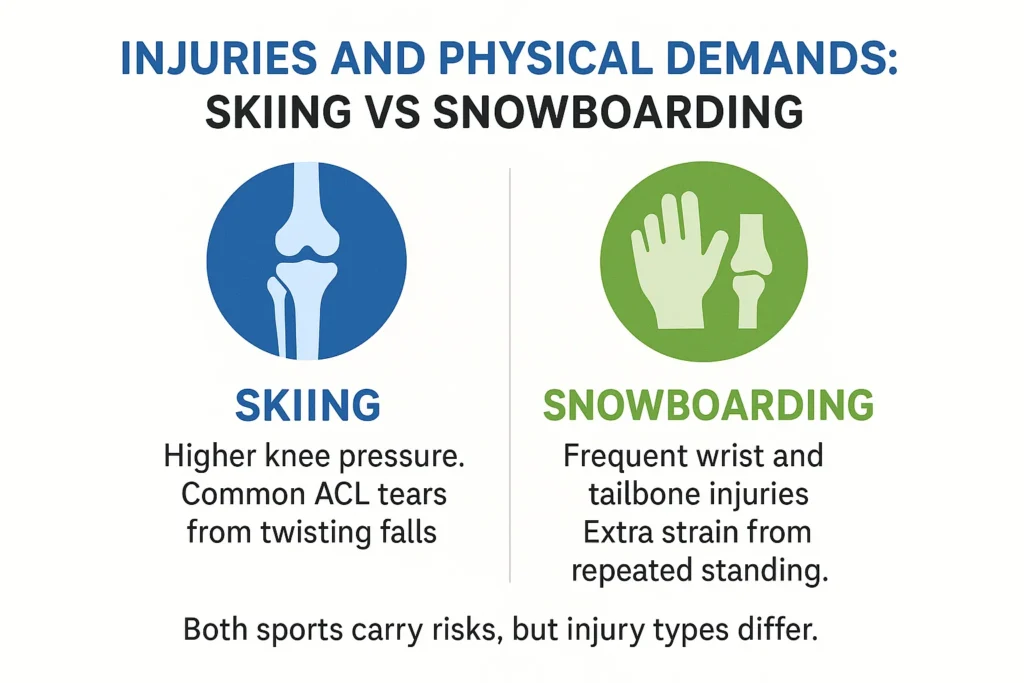
Snowboarding locks both feet on one board, reducing twisting risks but creating other problems. Beginners often land on wrists or tailbones when falling, and repeated standing after strapping in can be tiring. Both sports carry risks, but the injury patterns are clearly different.
Mastery and Skill Progression
Progress feels different once the basics are learned. Snowboarding often becomes easier after the first few days since riders only need to master two main moves: toeside and heelside carves. With these skills, most slopes are manageable, and tricks in terrain parks come quickly.
| Aspect | Skiing | Snowboarding |
|---|---|---|
| Core skills | Carving, hockey stops, edge control | Toeside and heelside carves |
| Progress speed | Slower, years to refine techniques | Faster once basics are learned |
| Riding switch | Difficult, facing downhill backwards | Easier, natural stance adjustment |
| Creativity | Limited on flat trails | Flat-ground tricks add variety |
Skiing requires more technical control. Carving, hockey stops, and managing two skis with independent edges take years to refine. Riding switch is also simpler on a snowboard, while skiing backward feels awkward and blind.
Terrain Performance
Terrain often decides which sport feels better. Snowboarding shines in deep powder, where the board floats and delivers a smooth, surf-like ride.
Skiing has the clear advantage in moguls, where two skis can weave through bumps with more control. On groomed steep runs, both sports work well, but in ungroomed backcountry conditions skiing is usually more practical.
| Aspect | Skiing | Snowboarding |
|---|---|---|
| Powder | Needs wide skis to float | Natural float, surf-like feel |
| Moguls | Easier to weave and control | Awkward, often avoided |
| Steep terrain | Strong on ungroomed and technical runs | Works best on groomed slopes |
| Terrain parks | Higher ceiling for complex tricks | Easier to learn rails early |
| Jumps | Flips more natural | Spins equally smooth |
In terrain parks, snowboarders learn rails faster, while skiers can push technical tricks further. For jumps, flips come easier on skis, but spins are equally fun in both.
Gear and Costs
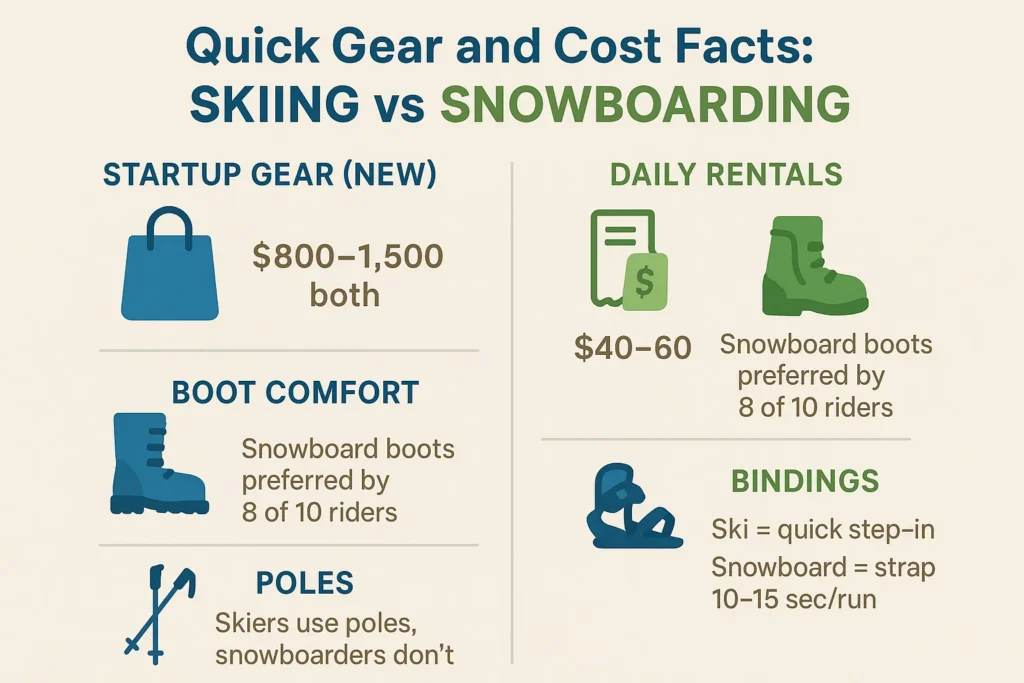
Getting started in either sport requires a similar budget. A full beginner setup skis or snowboard, boots, bindings, and basic apparel ranges from $800 to $1,500 new. Renting gear costs $40–$60 per day, making it a practical entry point. Beyond costs, comfort is where snowboarders win.
| Aspect | Skiing | Snowboarding |
|---|---|---|
| Startup cost | $800–$1,500 (similar) | $800–$1,500 (similar) |
| Boots | Stiff, awkward, hard to walk in | Comfortable, easy walking and driving |
| Bindings | Quick step-in | Manual strap-in each run |
| Poles | Required for balance and flats | Not used |
| Resort mobility | Carry skis, poles, and boots | Carry only board, boots stay on |
Their boots feel like sturdy winter boots, easy to walk in, while ski boots are rigid, heavy, and uncomfortable. Bindings differ too: skiers step in and go, while snowboarders strap in before every run. Skiers also carry poles, while snowboarders enjoy simpler mobility around the resort.
FAQs
1. Is skiing harder than snowboarding?
Skiing is easier for beginners, but snowboarding can feel more natural if you have board sport experience.
2. Which is safer: skiing or snowboarding?
Both carry risks. Skiing has higher knee injury risk, while snowboarding has more wrist and tailbone injuries.
3. Which sport is more fun?
Depends on preference. Skiing suits technical terrain; snowboarding offers freestyle creativity and powder fun.
4. Is skiing or snowboarding more expensive?
Both cost about the same for gear, lessons, and lift passes.
5. Should I learn skiing or snowboarding first?
If you’re brand new, start with skiing. If you already skateboard or surf, snowboarding might feel easier.
The difference between skiing and snowboarding lies in gear, learning style, injuries, and terrain strengths. Both sports cost about the same and carry unique risks. Instead of choosing only one, many riders enjoy learning both, gaining the freedom to experience every slope in their own way.
